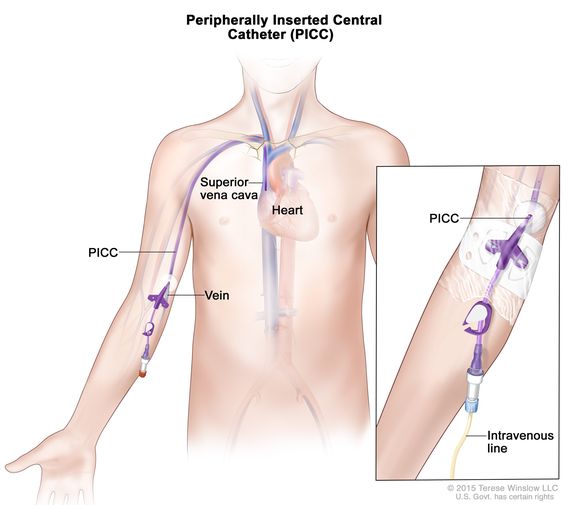peripherally inserted central catheter
(peh-RIH-feh-ruh-lee in-SER-ted SEN-trul KA-theh-ter)
A device used to draw blood and give treatments, including intravenous fluids, drugs, or blood transfusions. A thin, flexible tube is inserted into a vein in the upper arm and guided (threaded) into a large vein above the right side of the heart called the superior vena cava. A needle is inserted into a port outside the body to draw blood or give fluids. A peripherally inserted central catheter may stay in place for weeks or months and helps avoid the need for repeated needle sticks. Also called PICC.
